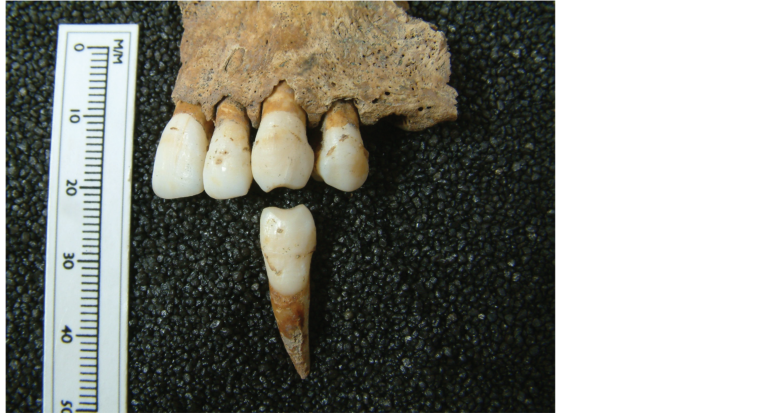This article is from the free online
Archaeology and the Battle of Dunbar 1650: From the Scottish Battlefield to the New World


Reach your personal and professional goals
Unlock access to hundreds of expert online courses and degrees from top universities and educators to gain accredited qualifications and professional CV-building certificates.
Join over 18 million learners to launch, switch or build upon your career, all at your own pace, across a wide range of topic areas.

 Smooth corresponding crescents of wear (indicated by the arrow) in the upper and lower teeth of Skeleton 21 attributed to pipe-smoking © Anwen Caffell, Durham University.
Smooth corresponding crescents of wear (indicated by the arrow) in the upper and lower teeth of Skeleton 21 attributed to pipe-smoking © Anwen Caffell, Durham University.
 Small areas of concave wear were seen in the tips of the left canines of Skeleton 25 © Anwen Caffell, Durham University.
Small areas of concave wear were seen in the tips of the left canines of Skeleton 25 © Anwen Caffell, Durham University.
 V-shaped notch in the upper right central incisor of a young adult (Skeleton 28) © Anwen Caffell, Durham University.
V-shaped notch in the upper right central incisor of a young adult (Skeleton 28) © Anwen Caffell, Durham University.






